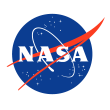NASA Industry Workshop Illuminates US Vision for In-space Services
On Oct. 17 and 18, NASA’s Goddard Space Flight Center in Greenbelt, Maryland, welcomed domestic companies, academia, and other government agencies to discuss a shared vision for a sustainable future in space at the 2022 In-space Servicing, Assembly, and Manufacturing (ISAM) Workshop, “Envisioning Our Future in Space.”
“ISAM technologies will be crucial to continued American leadership in space,” said Trudy Kortes, director of technology demonstrations for NASA’s Space Technology Mission Directorate at the agency’s headquarters in Washington. “Our yearly ISAM workshops give us the opportunity to provide updates on government ISAM missions, foster industry partnerships, and spark innovation in the field.”
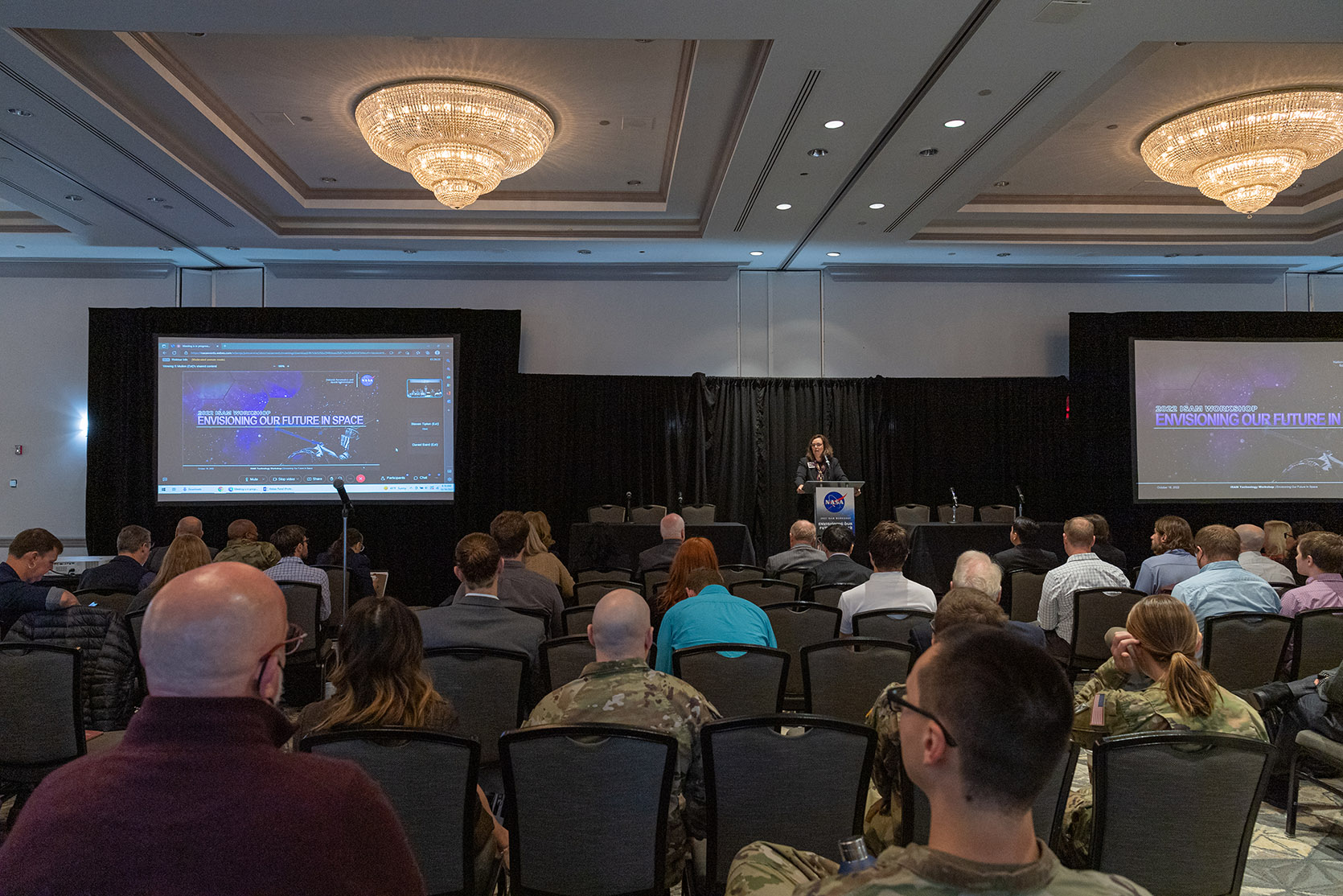
Jill McGuire, Associate Director for NASA’s Exploration and In-Space Services (NExIS) Projects Division at NASA’s Goddard Space Flight Center in Greenbelt, Maryland, addresses attendees at NASA’s 2022 In-space Servicing, Assembly, and Manufacturing Workshop on Oct. 18, 2022. (Credit: NASA/Michael Guinto)
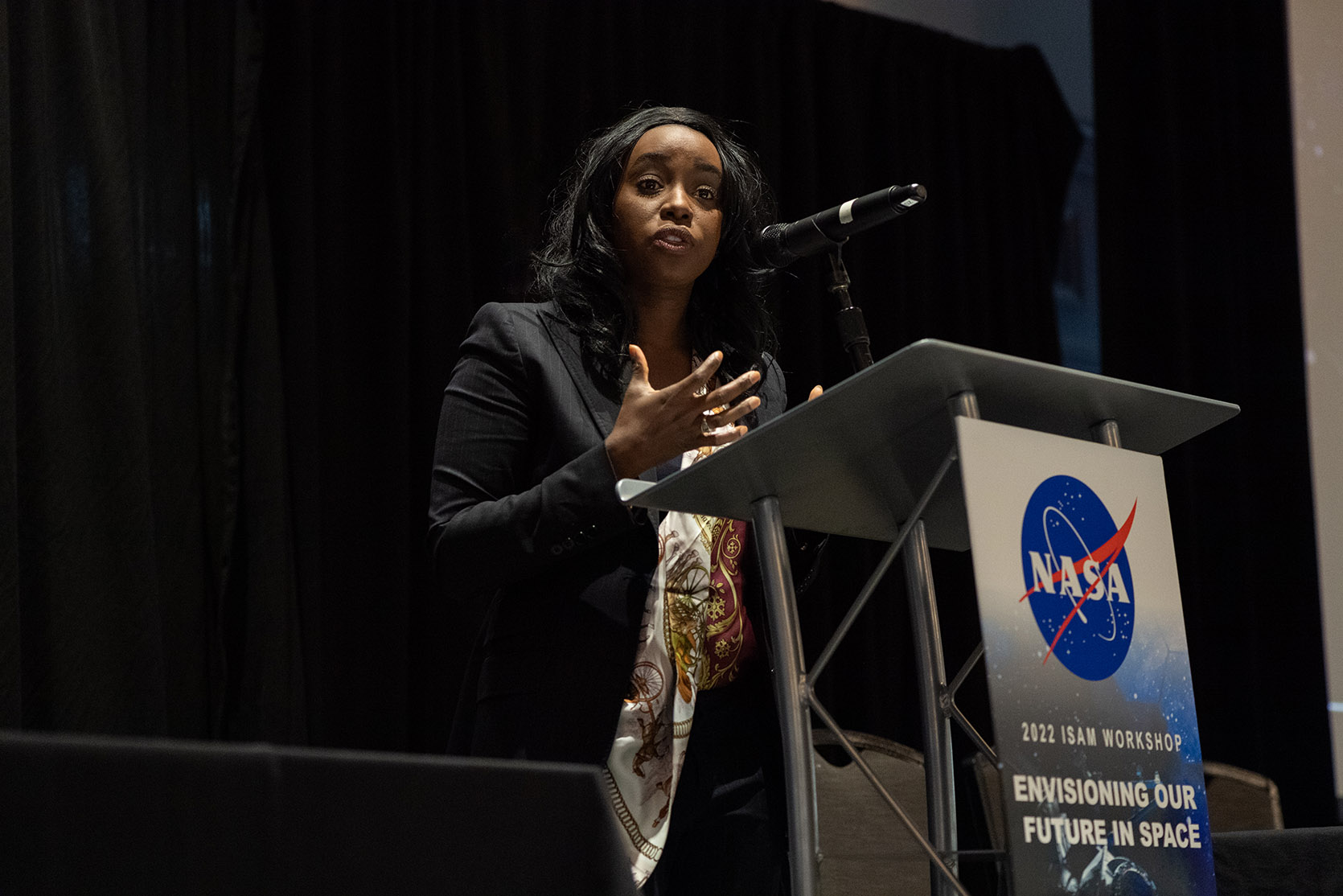
Dr. Ezinne Uzo-Okoro, assistant director for space policy, White House Office of Science and Technology Policy (OSTP), presents at the workshop on Oct. 18, 2022. (Credit: NASA/Michael Guinto)
Robotic ISAM capabilities will usher in a new era of science and exploration.
• In-space servicing covers a wide range of activities that can extend the operational life of satellites, including spacecraft repair, refueling, relocation, and retrofitting.
• In-space assembly capabilities empower missions to think beyond the size constraints of rocket fairings, launching components separately for construction in space.
• In-space manufacturing covers additive manufacturing and 3D printing, which can create large, monolithic structures previously relegated to science fiction.
• ISAM also includes key enabling technologies in other disciplines, such as active debris removal, climate monitoring, astrophysics, and more.
In April 2022, the White House Office of Science and Technology Policy released their ISAM National Strategy, which provides an interagency guidance for investments in ISAM capabilities and services. Over two days, the 2022 ISAM workshop elaborated on this strategy, offering the private sector resources, information, and connections to participate in the government’s vision for ISAM services and capabilities.
Day One
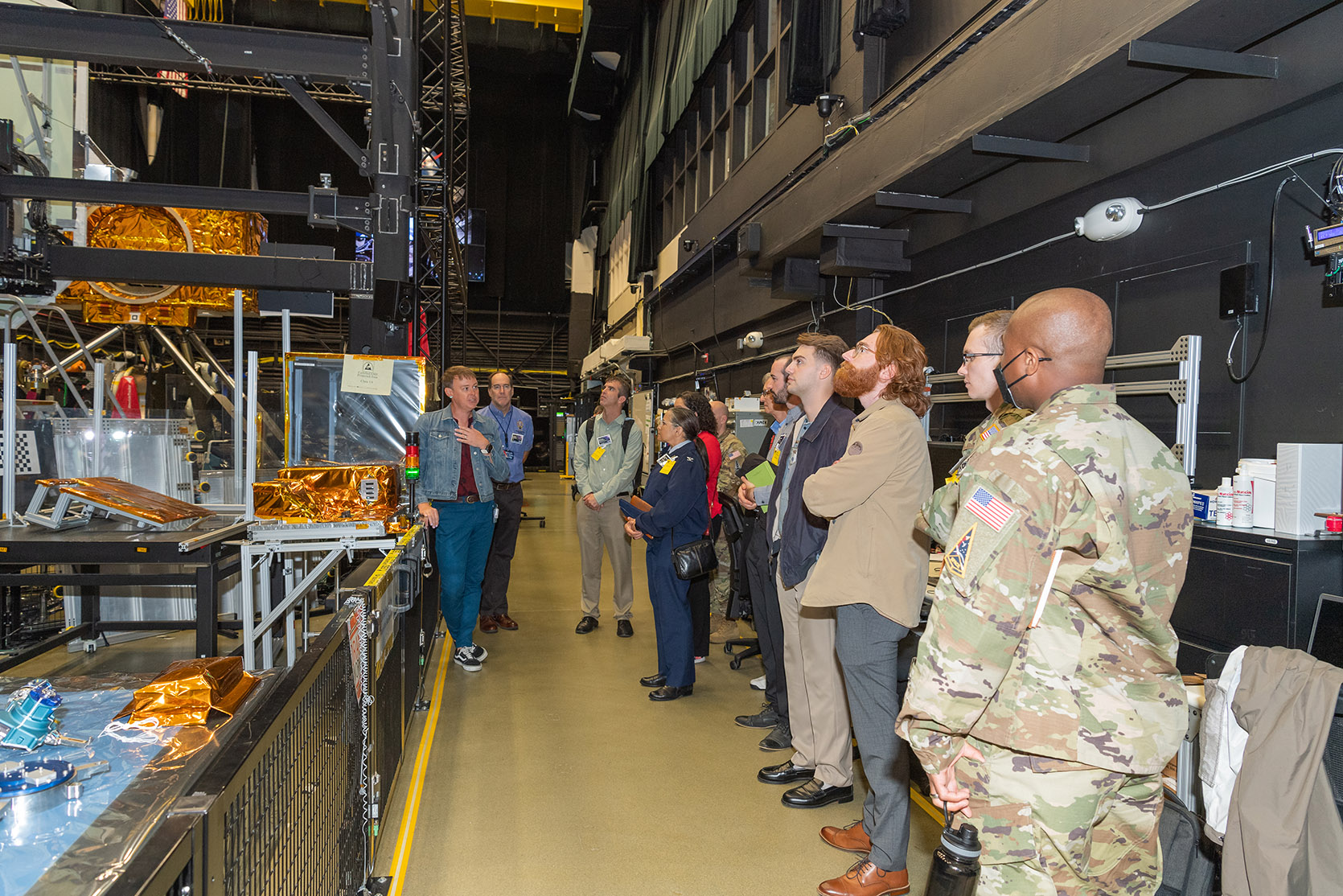
On-orbit Servicing, Assembly, and Manufacturing 1 (OSAM-1) Deputy Project Manager Emily Strube highlights the OSAM-1 servicing testbed in the Robotic Operations Center at Goddard on Oct. 17, 2022. (Credit: NASA/Michael Guinto)
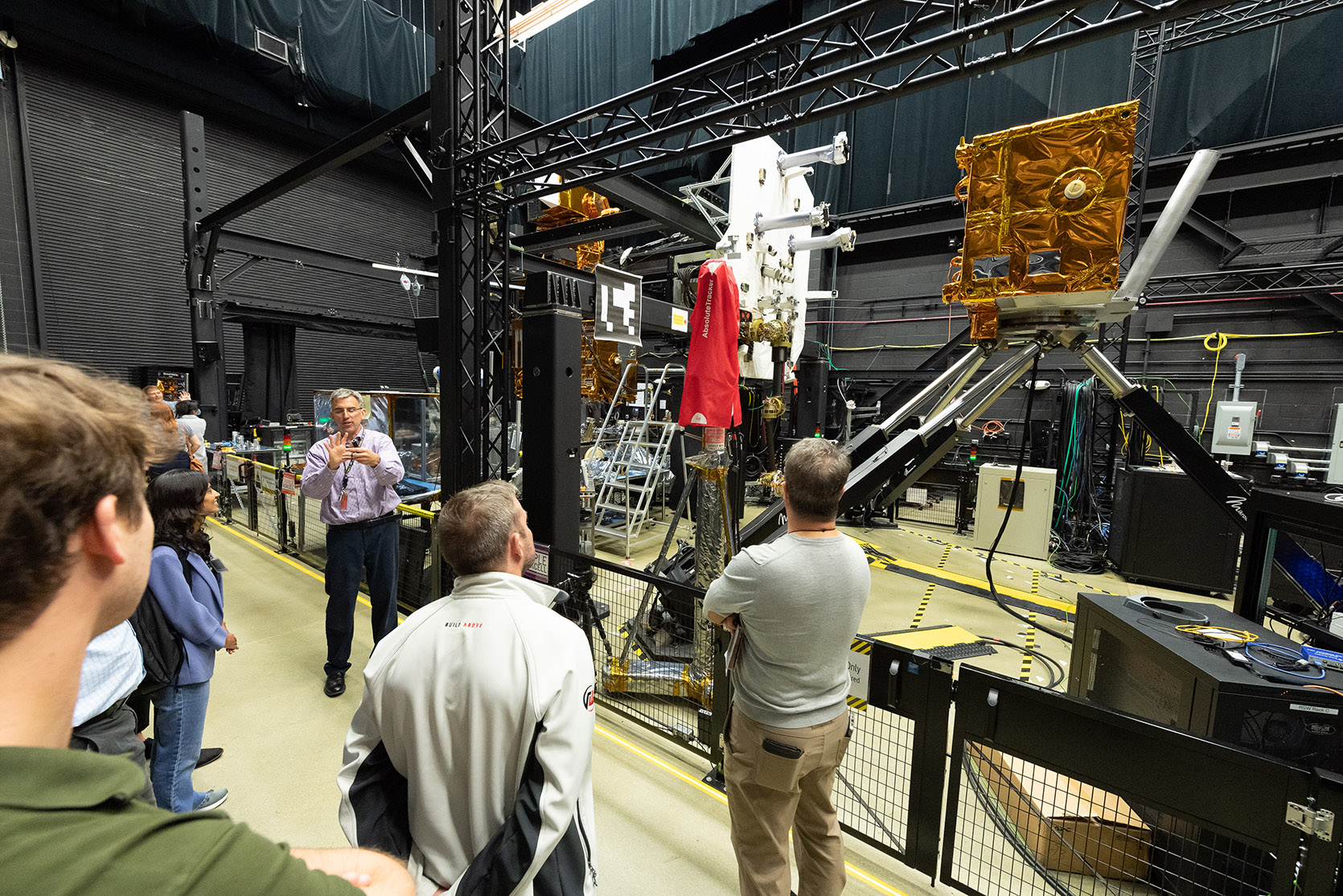
Brian Roberts, deputy director for NASA’s Exploration and In-space Services (NExIS) projects division, features the hexapod robot within the Robotic Operations Center at Goddard. (Credit: NASA/Michael Guinto)
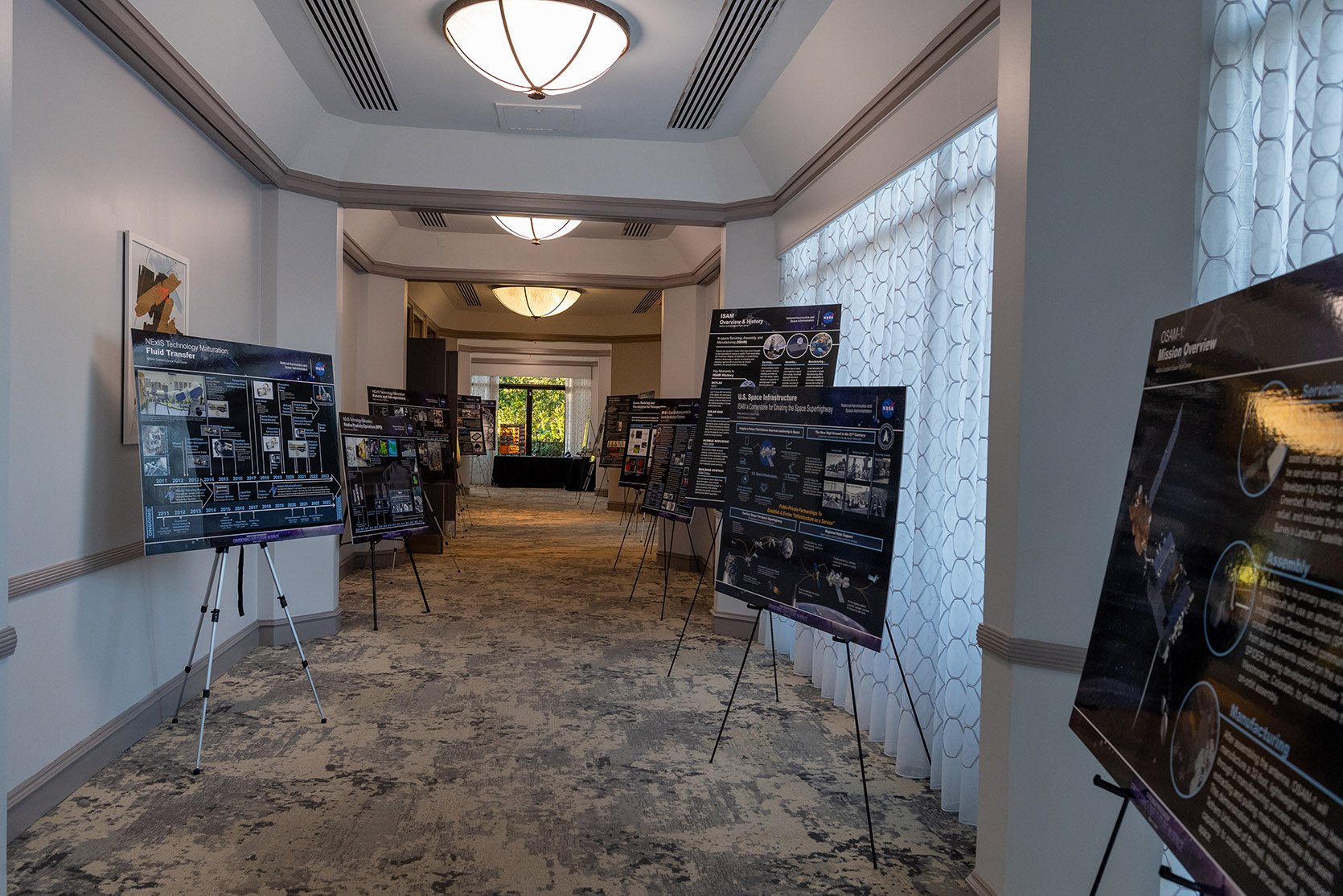
Technical posters line the halls of the Crowne Plaza College Park for the workshop. (Credit: NASA/Michael Guinto)
On Oct. 17, NASA’s Exploration and In-space Services (NExIS) projects division, a group at Goddard devoted to ISAM, welcomed in-person workshop participants to tour the center’s Greenbelt campus.
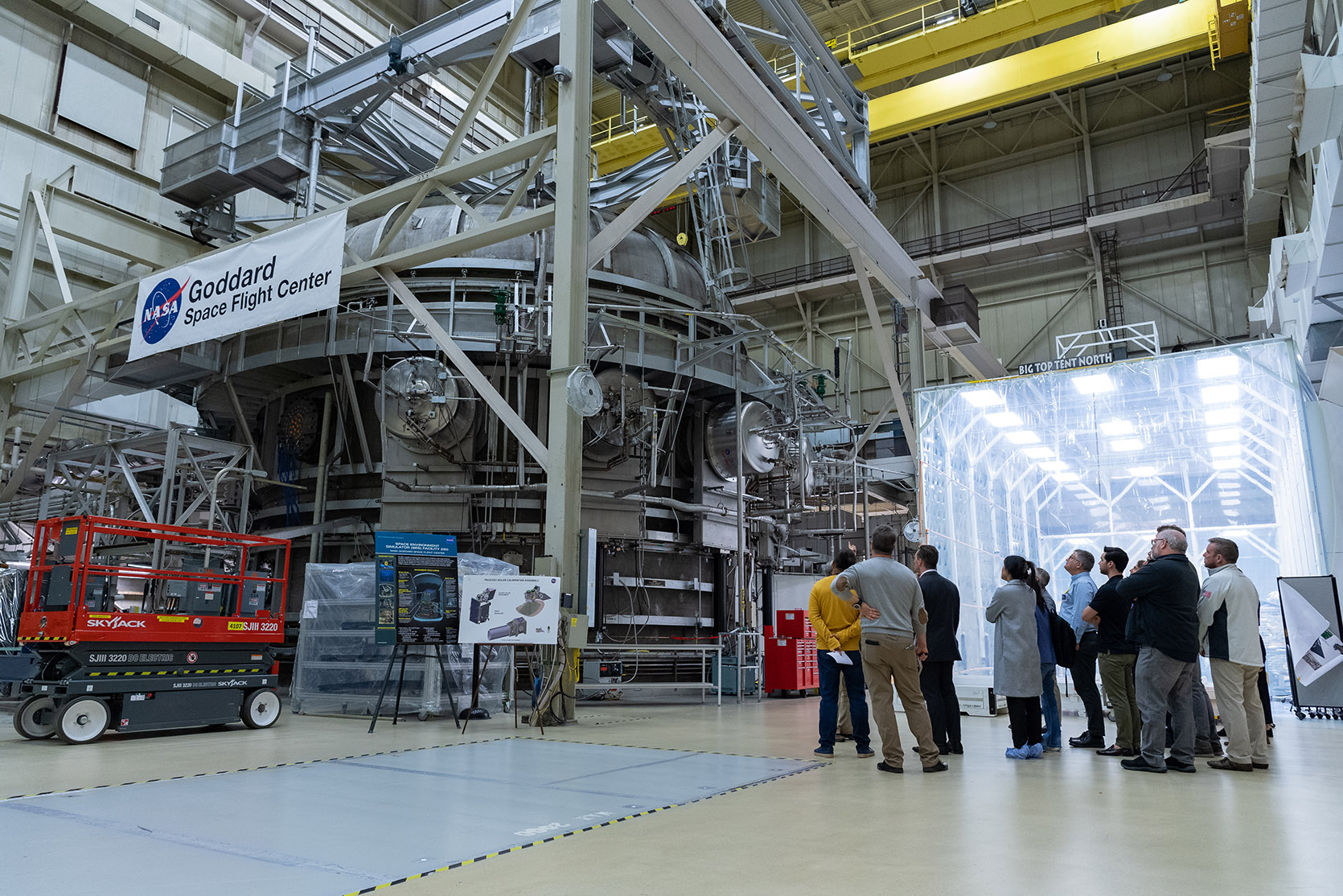
Workshop participants view the Space Environment Simulator within the integration and test facility at Goddard on Oct. 17, 2022. (Credit: NASA/Michael Guinto)
“We were proud to share all that Goddard has to offer with our visitors,” said NExIS Division Director Jill McGuire. “Goddard has a profound history and unique expertise in ISAM that extends back to the Hubble servicing missions, which demonstrated the power of ISAM.”
The tour included many facilities key to the On-orbit Servicing, Assembly, and Manufacturing 1 (OSAM-1) Technology Demonstration Mission. Currently slated for launch in 2026, OSAM-1 will showcase innovation in all three of the primary ISAM focus areas. The servicer will rendezvous with, grasp, refuel, and relocate Landsat 7, a U.S. Geological Survey satellite that was never meant to be serviced. The mission will then complete assembly and manufacturing demonstrations developed by commercial partners Maxar Technologies of Westminster, Colorado, and Tethers Unlimited of Bothell, Washington.
Guests visited Goddard’s “White House” clean room, where Goddard engineer Darian Robbins showcased virtual and augmented reality tools guiding preparations for OSAM-1 integration and testing. Maxar Technologies plans to deliver the OSAM-1 spacecraft to Goddard in early 2023.
In the Robotic Operations Center, OSAM-1 Deputy Project Manager Emily Strube and NExIS Deputy Director Brian Roberts highlighted ground testing apparatus like the hexapod robot and servicing testbed. The hexapod allows engineers to mimic orbital dynamics between OSAM-1 and Landsat 7 during rendezvous and proximity operations. The servicing testbed includes a full-sized replica of Landsat 7 for engineers to develop flight procedures for robotic refueling.
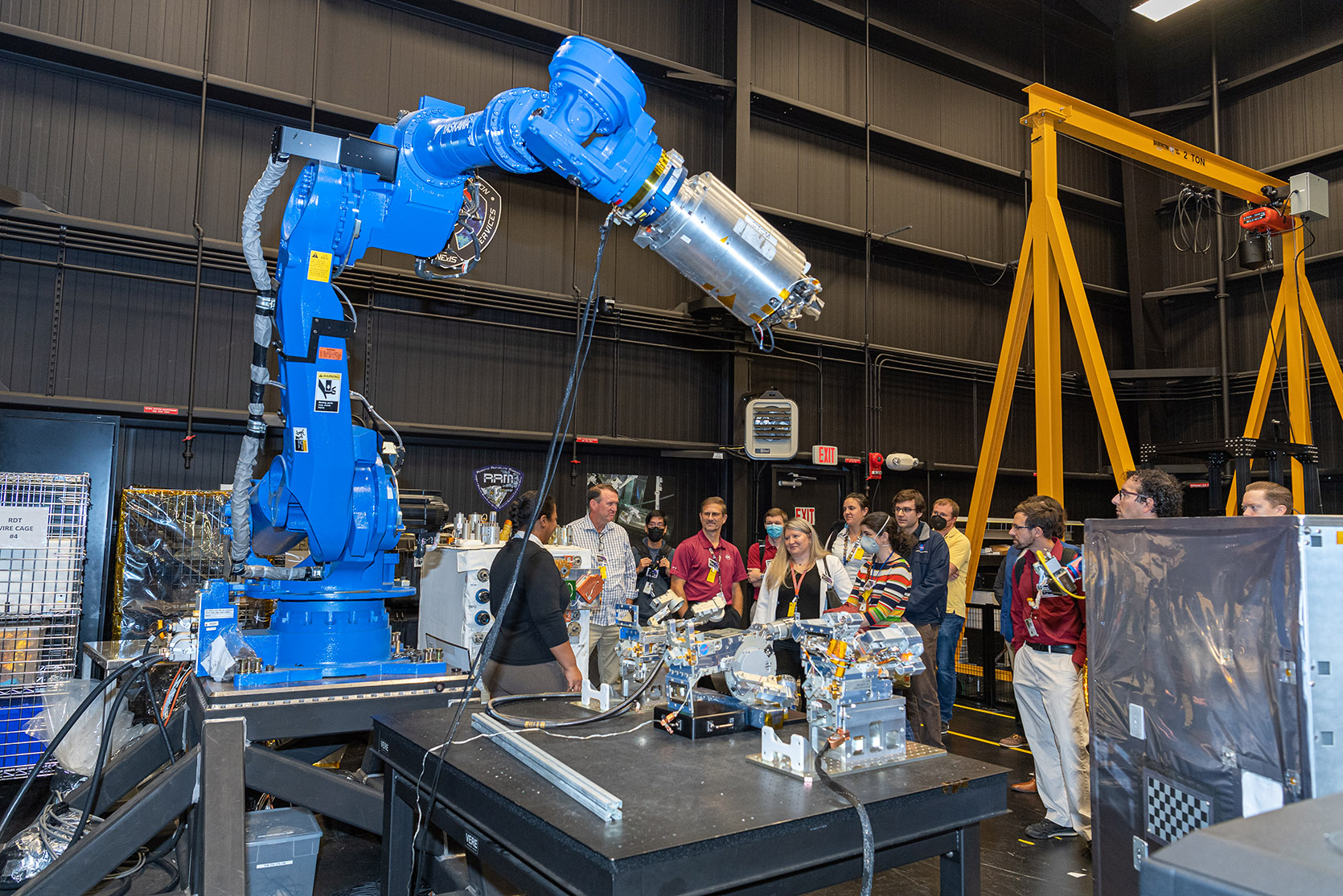
Framed by a blue industrial robot, Goddard robotic systems engineer Zakiya Tomlinson speaks with workshop participants in the Servicing Technology Center at NASA’s Goddard Space Flight Center on Oct. 17, 2022. (Credit: NASA/Michael Guinto)
Guests also visited the Servicing Technology Center for live robotic demonstrations. There, McGuire and robotic systems engineer Zakiya Tomlinson detailed other NExIS ISAM missions and resources, including testing apparatus, hardware, and flight payloads like the Robotic Refueling Mission on the International Space Station.
Beyond ISAM-specific tour stops, guests visited the mission operations center for the Hubble Space Telescope, Earth Science Mission Operations, and the integration and test facility, Goddard’s “Chamber of Horrors.” Visitors also heard from experts working on observatories like the James Webb Space Telescope and Nancy Grace Roman Space Telescope, as well as from representatives of the Near Space Network, which provides communications and navigation services from the launch pad out to a million miles away from Earth.
In the evening, a technical poster session at the nearby Crowne Plaza College Park highlighted ISAM technologies in development across the agency and by NASA academic partners. Several NASA centers were represented, including the agency’s Langley Research Center in Hampton, Virginia; Marshall Space Flight Center in Huntsville, Alabama; Ames Research Center in California’s Silicon Valley; and Goddard.
Day Two
The primary workshop agenda occurred on Oct. 18 at the Crowne Plaza College Park and online for hybrid participants.
The program included representatives from most of NASA’s mission directorates and ISAM experts from the Department of Defense. Goddard Center Director Dennis Andrucyk kicked off the event, welcoming over 300 individuals from diverse government, industry, and academic organizations.
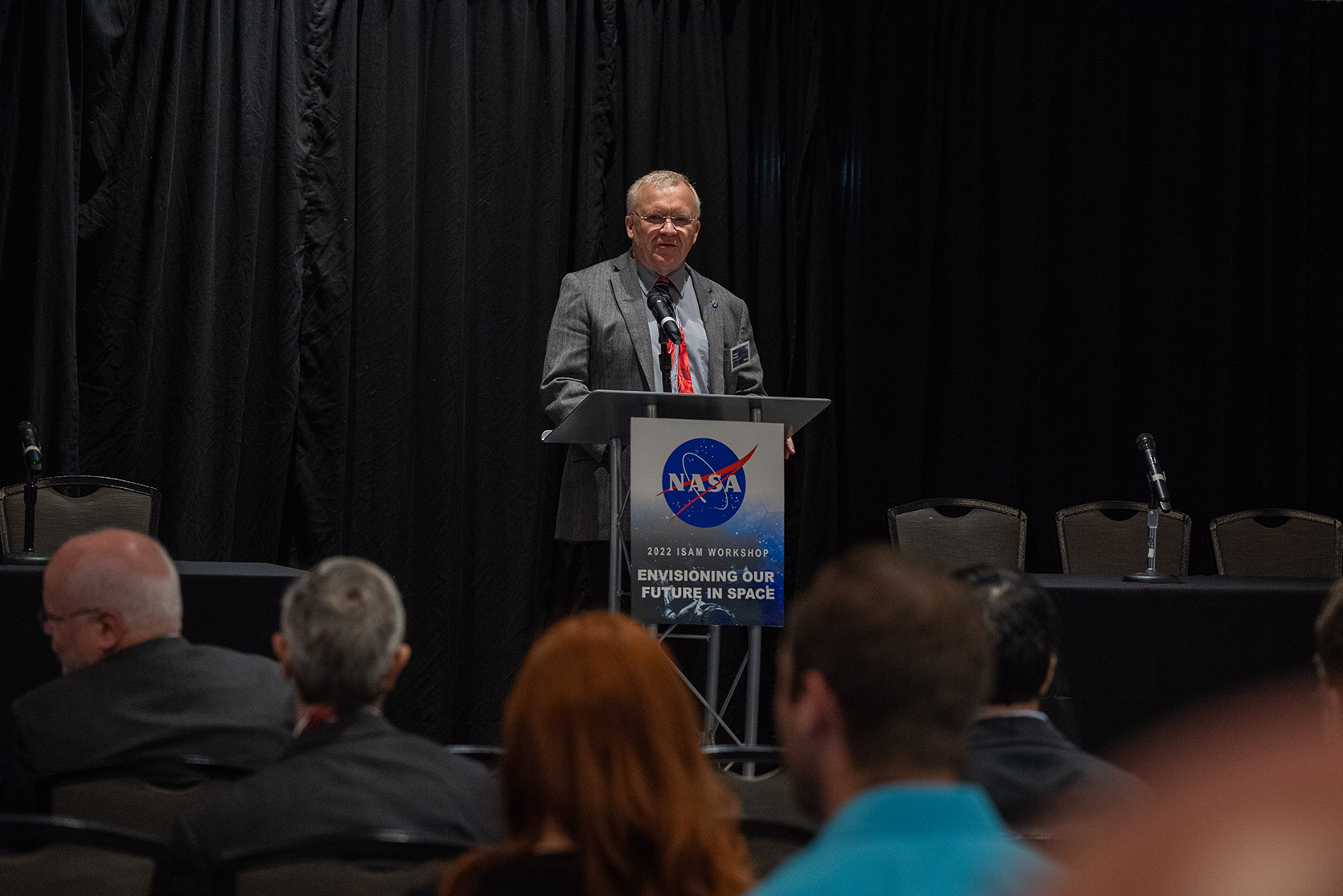
Jim Reuter, NASA associate administrator for the Space Technology Mission Directorate, addresses workshop attendees on Oct. 18. (Credit: NASA/Michael Guinto)
The first of four workshop sessions concerned the government’s vision for ISAM. OSTP Assistant Director for Space Policy Dr. Ezinne Uzo-Okora overviewed and elaborated on the ISAM National Strategy. NASA Associate Administrator for the Space Technology Mission Directorate Jim Reuter delved into NASA ISAM objectives with Kortes and Senior Technical Advisor Debi Tomek. In addition, the U.S. Space Force’s Col. Meredith Beg provided a Department of Defense perspective.
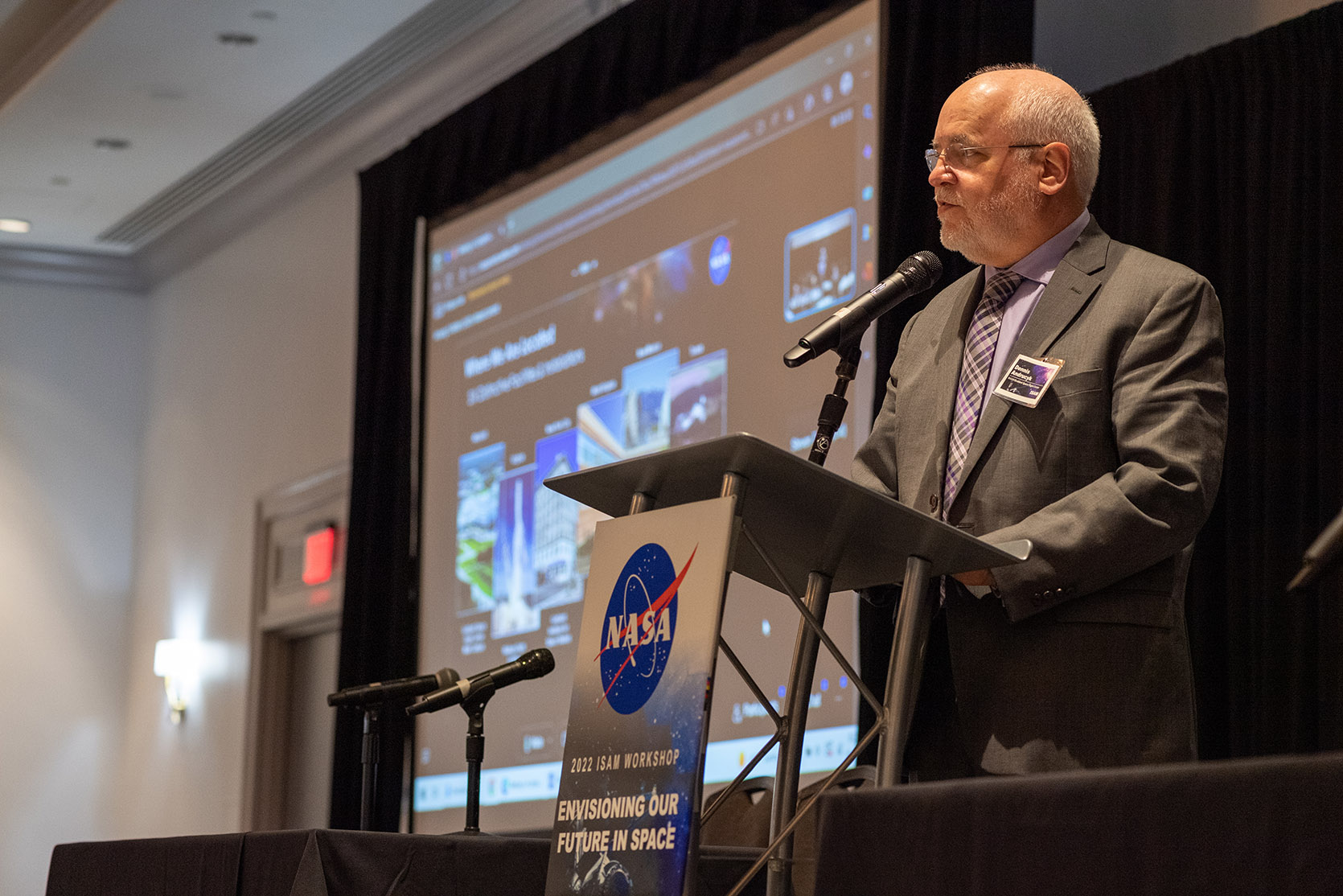
Dennis Andrucyk, Goddard Space Flight Center director, welcomes participants to the workshop on Oct. 18, 2022. (Credit: NASA/Michael Guinto)
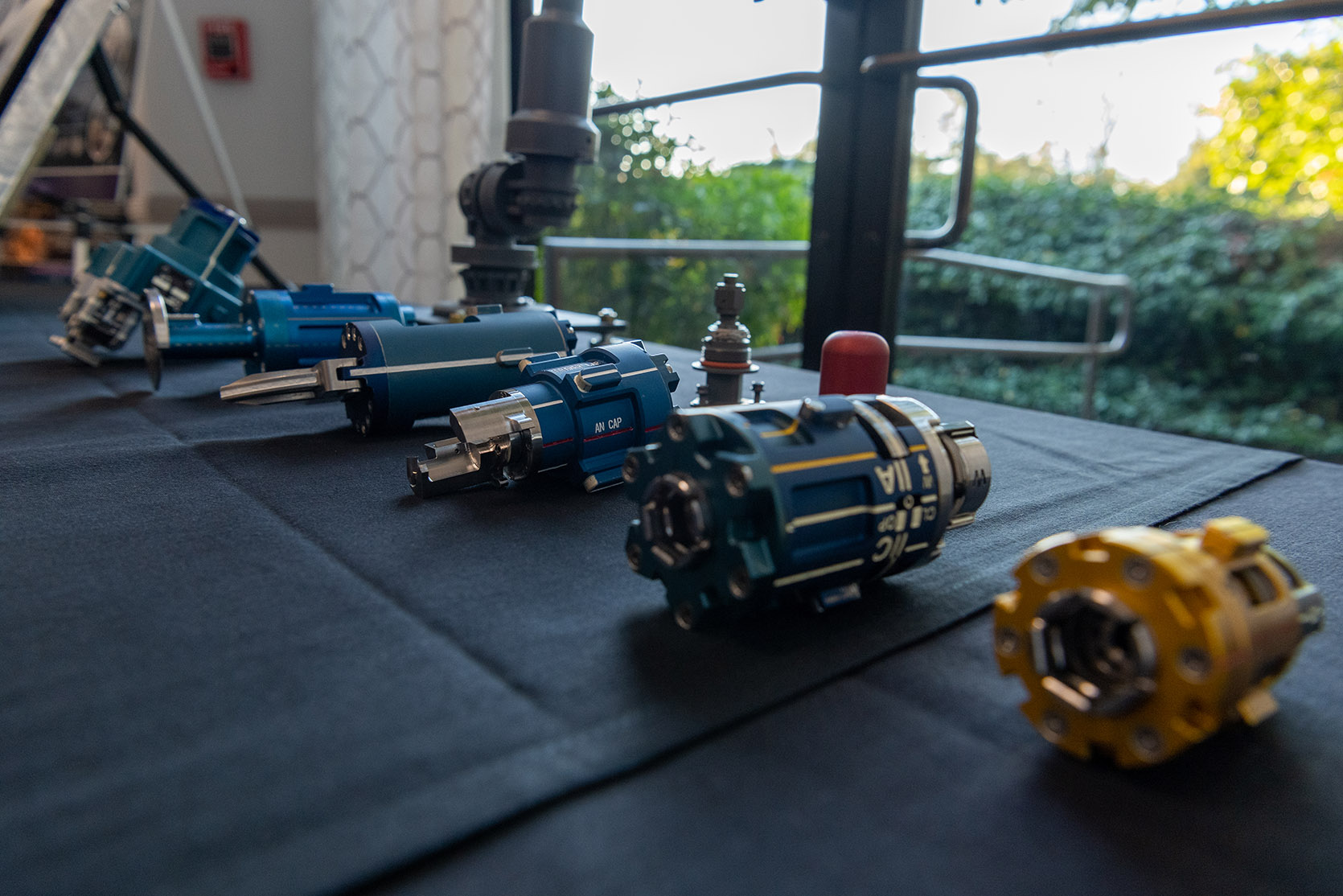
A table of NASA-developed servicing tools at the Crowne Plaza College Park for the workshop. (Credit: NASA/Michael Guinto)
The second session outlined current ISAM missions across the federal government. This included overviews of OSAM-1 by Strube and of On-orbit Servicing, Assembly, and Manufacturing 2 (OSAM-2) by Project Manager Paul Shestople of Redwire Space, the company developing the mission for NASA. OSAM-2 will demonstrate in-space assembly and manufacturing capabilities by deploying a surrogate solar array and 3D printing two beams – 33 and 20 feet long – while orbiting in space.
NASA’s Sharon Jefferie spoke to ISAM applications for Gateway, which will be humanity’s first space station in lunar orbit. Defense Advanced Research Projects Agency (DARPA)
Program Manager Anita Saplan provided updates on DARPA’s Robotic Servicing of Geosynchronous Satellites (RSGS) program, which is developing cooperative inspection and servicing technologies for geosynchronous spacecraft, which orbit Earth in step with its rotation.
The third and fourth sessions of the day included presentations and panel discussions about envisioned futures and strategic focus areas in ISAM. This provided insight into desired capabilities for active debris removal, commercial destinations in low-Earth orbit, ground testing infrastructure, commercial standards, and more.
“ISAM capabilities have the potential to revolutionize almost every aspect of the space ecosystem” said Tomek. “The further maturation of these technologies will enable bold new space missions, operations, and infrastructure that will benefit both civil and defense applications. This workshop showcased the incredible strides the ISAM community can make when the public and private sectors work together.”
By Danny Baird
NASA’s Goddard Space Flight Center, Greenbelt, Md.











